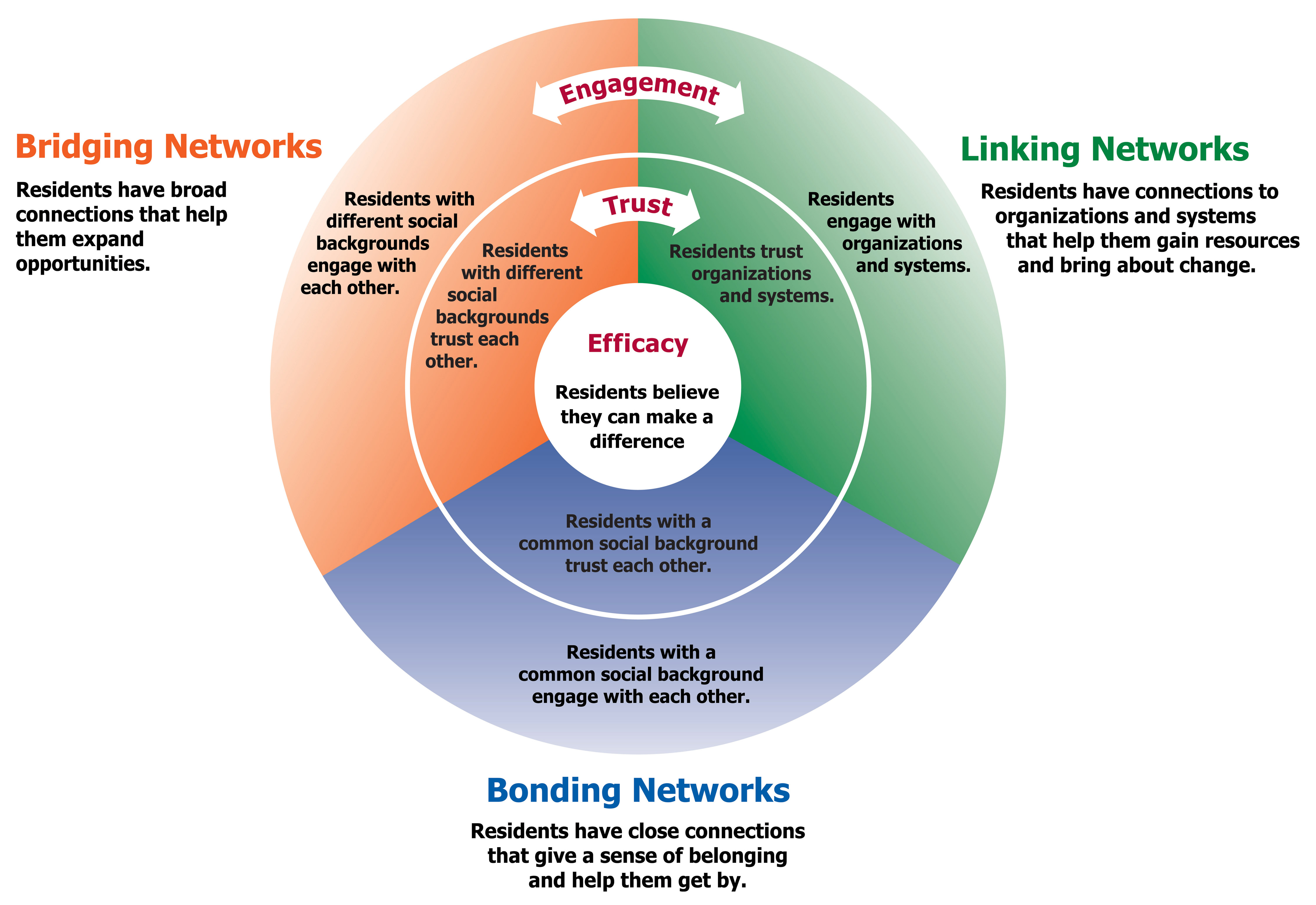Extension’s Community Social Capital Model shows the whole social capital picture.
- The core is efficacy — a belief that one can make a difference in a variety of social contexts.
- The inner ring considers trust within each of the three types of networks:
- Bonding — residents with a common social background trust each other
- Bridging — residents with different social backgrounds trust each other
- Linking — residents trust organizations and systems
- The outer ring considers types of engagement, also within each of the three types of networks:
- Bonding — residents with a common social background engage with each other
- Bridging — residents with different social backgrounds engage with each other
- Linking — residents engage with organizations and systems
When conditions in each of these seven aspects of social capital are strong, a community is more able to channel its human energy to solve problems.
- Bonding — residents have close connections that give a sense of belonging and help them get by.
- Bridging — residents have broad connections that help them expand opportunities.
- Linking — residents have connections to organizations and systems that help them gain resources and bring about change.
Consult with us
Community economics • Leadership and civic engagement • Tourism
Extension educators work in communities with partners throughout Minnesota. Contact us for consultation, guidance and conversation about your community.


